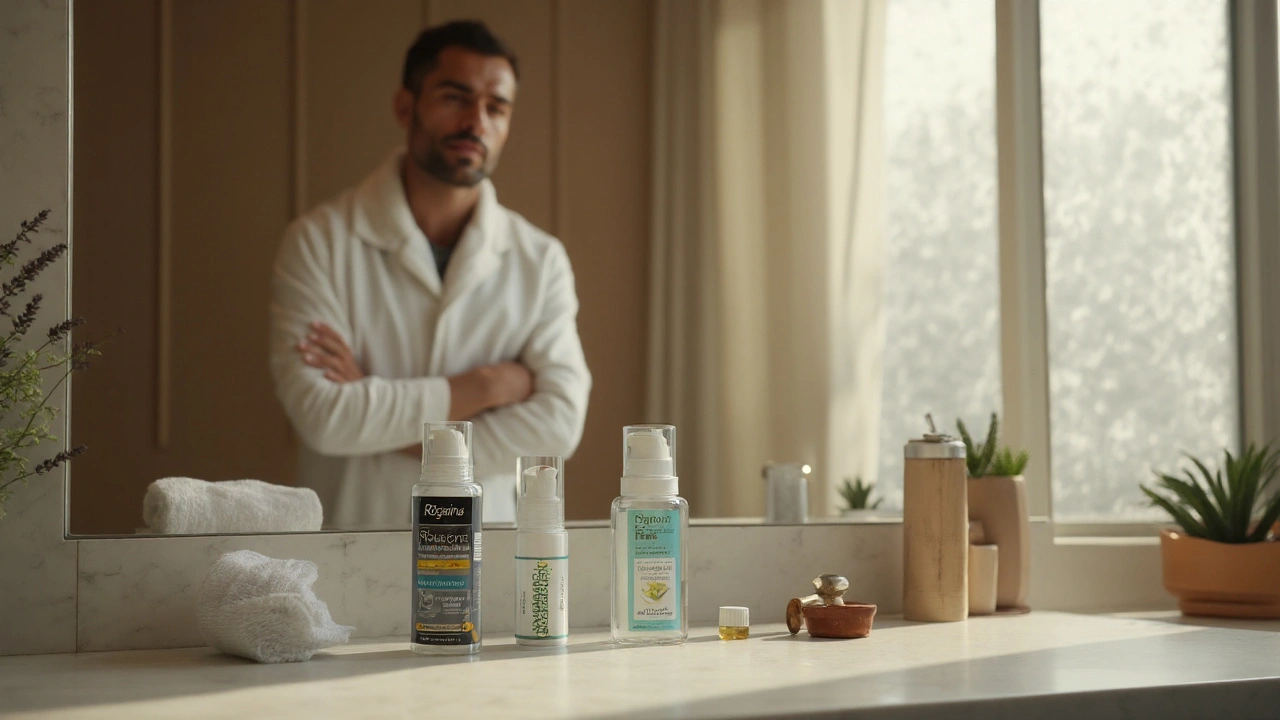

When dealing with androgenetic alopecia, a hereditary form of hair loss driven by hormones and genetics. Also known as male or female pattern baldness, it typically shows up as a receding hairline in men or diffuse thinning on the crown in women. The condition hinges on the interaction of dihydrotestosterone (DHT) with genetically sensitive hair follicles, which gradually shrink and produce finer hairs. Understanding this link is the first step toward effective management.
Three major entities shape the clinical picture. First, finasteride, an oral 5‑alpha‑reductase inhibitor that lowers DHT levels directly tackles the hormonal driver. Second, minoxidil, a topical vasodilator that stimulates follicle activity works on the downstream effects, encouraging existing hairs to grow thicker. Third, hair transplant, a surgical technique that relocates healthy follicles to balding zones provides a permanent structural solution for advanced cases. Together they form a treatment triangle: hormonal control, follicle stimulation, and permanent restoration.
Beyond drugs and surgery, genetics set the stage. A family history of early thinning often signals a higher risk, because specific gene variants make follicles more vulnerable to DHT. Lifestyle factors—diet, stress, and scalp health—can influence the speed of progression, but they don’t replace the core biological mechanisms. androgenetic alopecia therefore requires a multi‑layered approach: assess genetic predisposition, monitor DHT activity, and choose a blend of pharmacologic and procedural options that match the severity.
In the collection below you’ll find detailed articles that break down each of these entities. From comparing finasteride dosages to exploring the latest minoxidil formulations, and from evaluating hair‑transplant techniques to debunking common myths about diet and stress, the posts give you actionable insights you can apply right away. Dive in and discover how to tailor a plan that fits your unique hair‑loss profile.

Compare Rogaine 2% minoxidil with finasteride, 5% minoxidil, laser therapy and natural options. Learn efficacy, side effects, costs and how to choose the right hair loss solution.